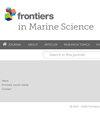SalaciaML-2-Arctic -一个北冰洋温度和盐度数据的深度学习质量控制算法
IF 3
2区 生物学
Q1 MARINE & FRESHWATER BIOLOGY
引用次数: 0
摘要
我们通过集成深度学习神经网络扩展了经典的质量控制(QC)算法,从而产生了SalaciaML-2-Arctic,这是一个用于北冰洋温度和盐度剖面数据自动QC的工具。神经网络组件是在北极和亚北极水文统一数据库(UDASH)上进行训练的,该数据库已经由海洋学家进行了质量控制和标记。SalaciaML-2-Arctic通过纠正经典算法的错误分类,成功地再现了人类的专业知识,将温度的假阴性(错误分类为“坏”的样本)减少了96%,盐度减少了99%。当与人工专家的视觉后qc结合使用时,它可以减少约60%的温度工作量和85%的盐度工作量。重现分析或将方法应用于其他数据集所需的所有代码和数据都可以通过PANGAEA和GitHub公开获得。此外,SalaciaML-2-Arctic可以作为基于浏览器的应用程序访问https://mvre.autoqc.cloud.awi.de,无需软件安装或编程知识即可使用。本文章由计算机程序翻译,如有差异,请以英文原文为准。
SalaciaML-2-Arctic — a deep learning quality control algorithm for Arctic Ocean temperature and salinity data
We have extended a classical quality control (QC) algorithm by integrating a deep learning neural network, resulting in SalaciaML-2-Arctic , a tool for automated QC of Arctic Ocean temperature and salinity profile data. The neural network component was trained on the Unified Database for Arctic and Subarctic Hydrography (UDASH), which has been quality-controlled and labeled by expert oceanographers. SalaciaML-2-Arctic successfully reproduces human expertise by correcting misclassifications made by the classical algorithm, reducing False Negatives (samples incorrectly classified as “bad”) by 96% for temperature and 99% for salinity. When used in combination with a visual post-QC by human experts, it achieves a workload reduction of approximately 60% for temperature and 85% for salinity. All code and data required to reproduce the analysis or apply the method to other datasets are openly available via PANGAEA and GitHub. Moreover, SalaciaML-2-Arctic is accessible as a browser-based application at https://mvre.autoqc.cloud.awi.de , enabling its use without software installation or programming knowledge.
求助全文
通过发布文献求助,成功后即可免费获取论文全文。
去求助
来源期刊

Frontiers in Marine Science
Agricultural and Biological Sciences-Aquatic Science
CiteScore
5.10
自引率
16.20%
发文量
2443
审稿时长
14 weeks
期刊介绍:
Frontiers in Marine Science publishes rigorously peer-reviewed research that advances our understanding of all aspects of the environment, biology, ecosystem functioning and human interactions with the oceans. Field Chief Editor Carlos M. Duarte at King Abdullah University of Science and Technology Thuwal is supported by an outstanding Editorial Board of international researchers. This multidisciplinary open-access journal is at the forefront of disseminating and communicating scientific knowledge and impactful discoveries to researchers, academics, policy makers and the public worldwide.
With the human population predicted to reach 9 billion people by 2050, it is clear that traditional land resources will not suffice to meet the demand for food or energy, required to support high-quality livelihoods. As a result, the oceans are emerging as a source of untapped assets, with new innovative industries, such as aquaculture, marine biotechnology, marine energy and deep-sea mining growing rapidly under a new era characterized by rapid growth of a blue, ocean-based economy. The sustainability of the blue economy is closely dependent on our knowledge about how to mitigate the impacts of the multiple pressures on the ocean ecosystem associated with the increased scale and diversification of industry operations in the ocean and global human pressures on the environment. Therefore, Frontiers in Marine Science particularly welcomes the communication of research outcomes addressing ocean-based solutions for the emerging challenges, including improved forecasting and observational capacities, understanding biodiversity and ecosystem problems, locally and globally, effective management strategies to maintain ocean health, and an improved capacity to sustainably derive resources from the oceans.
 求助内容:
求助内容: 应助结果提醒方式:
应助结果提醒方式:


